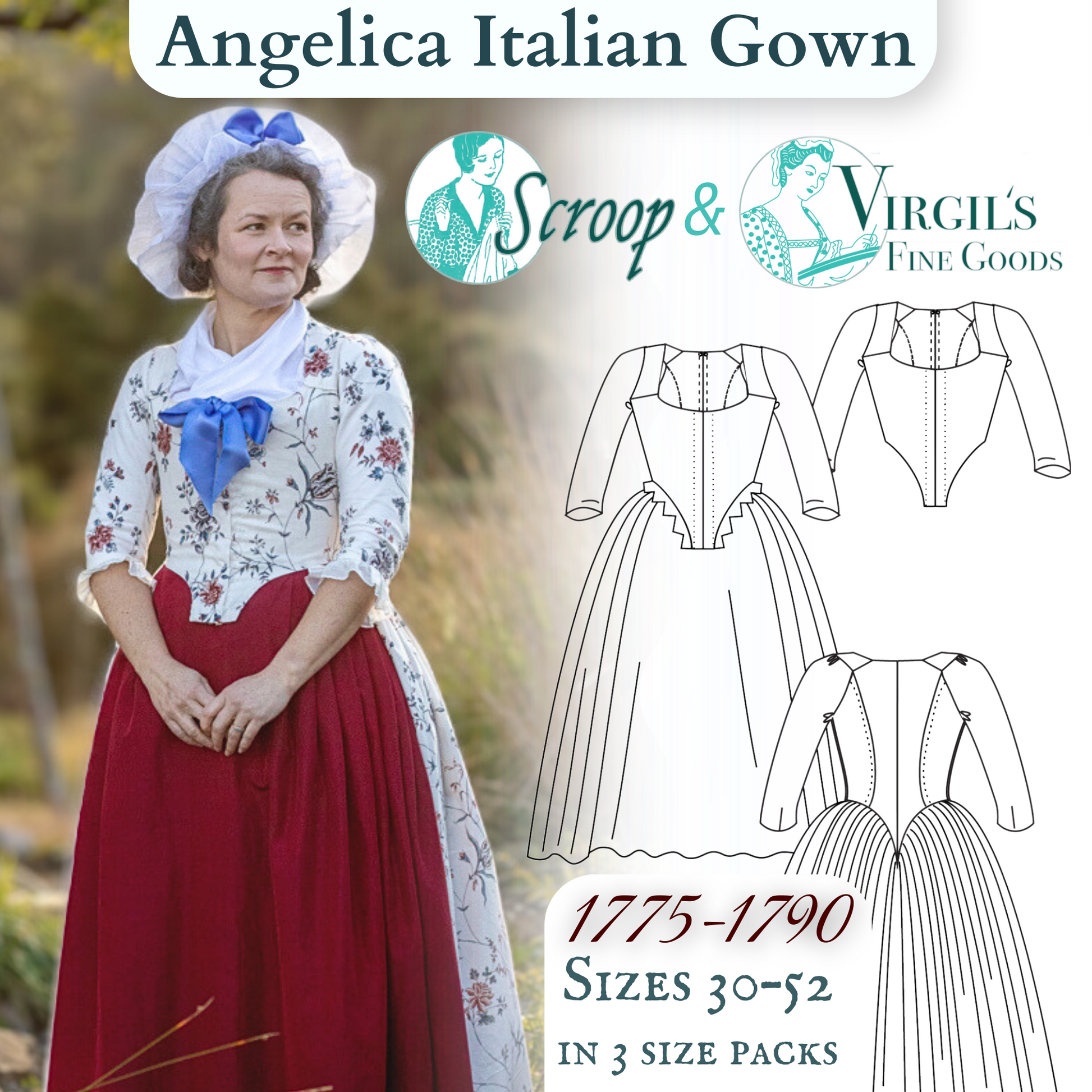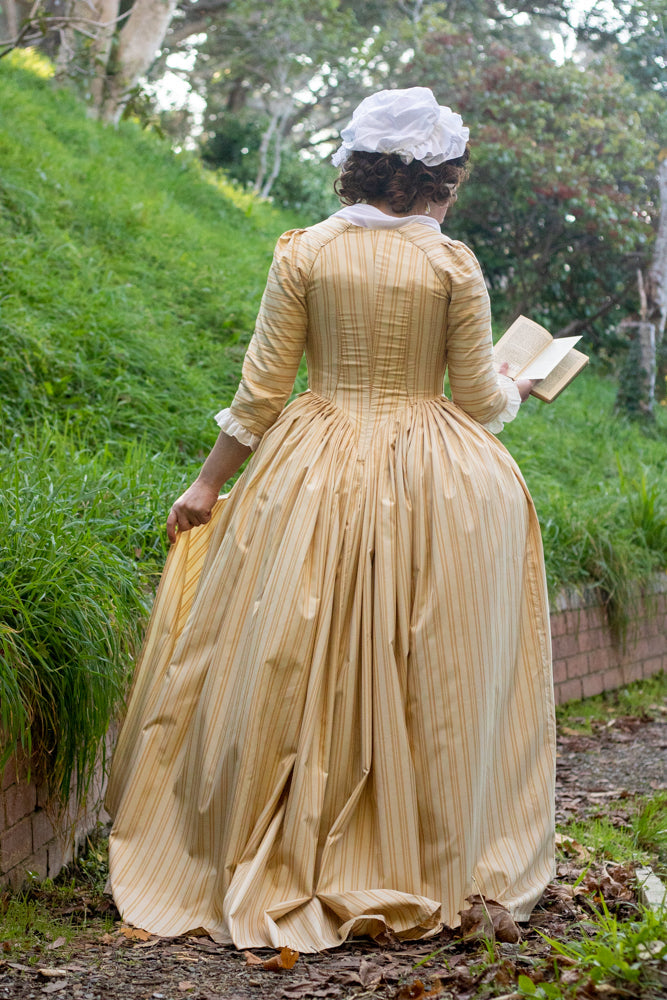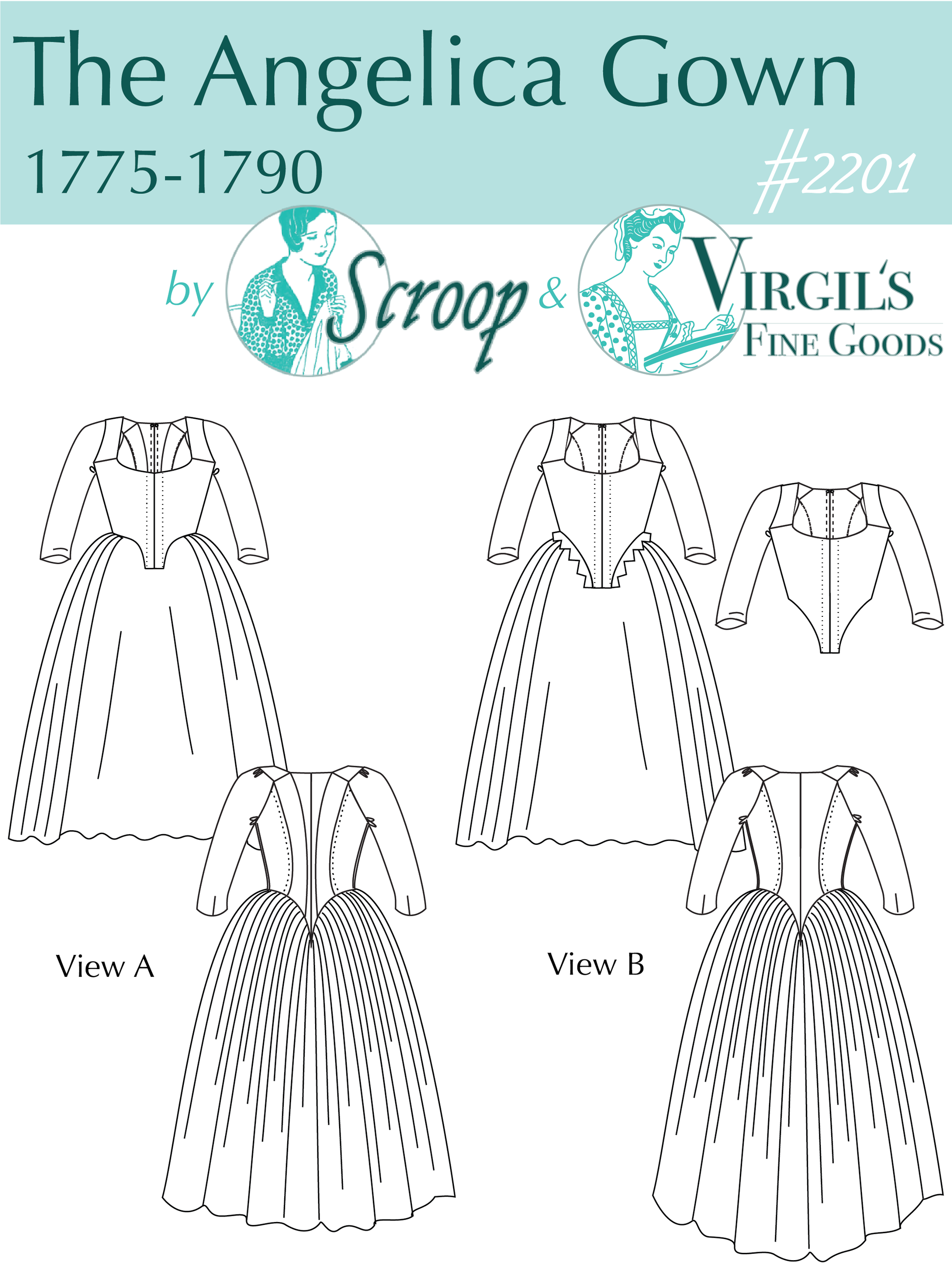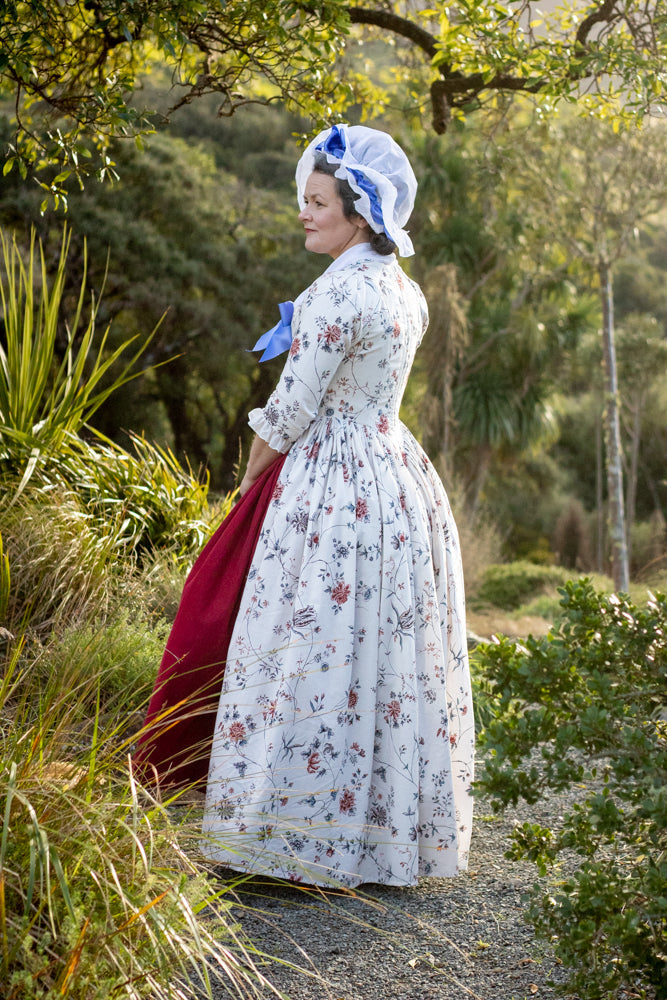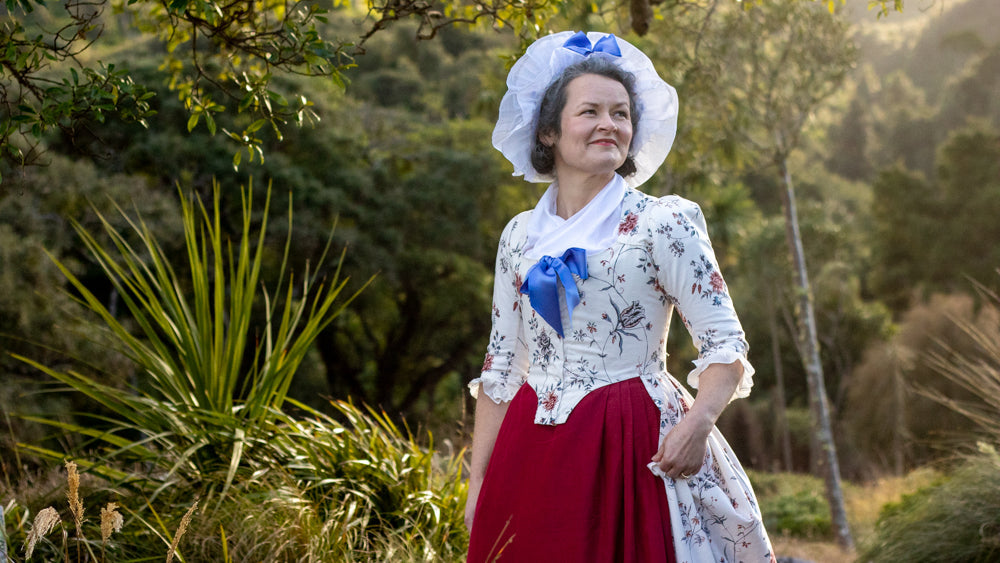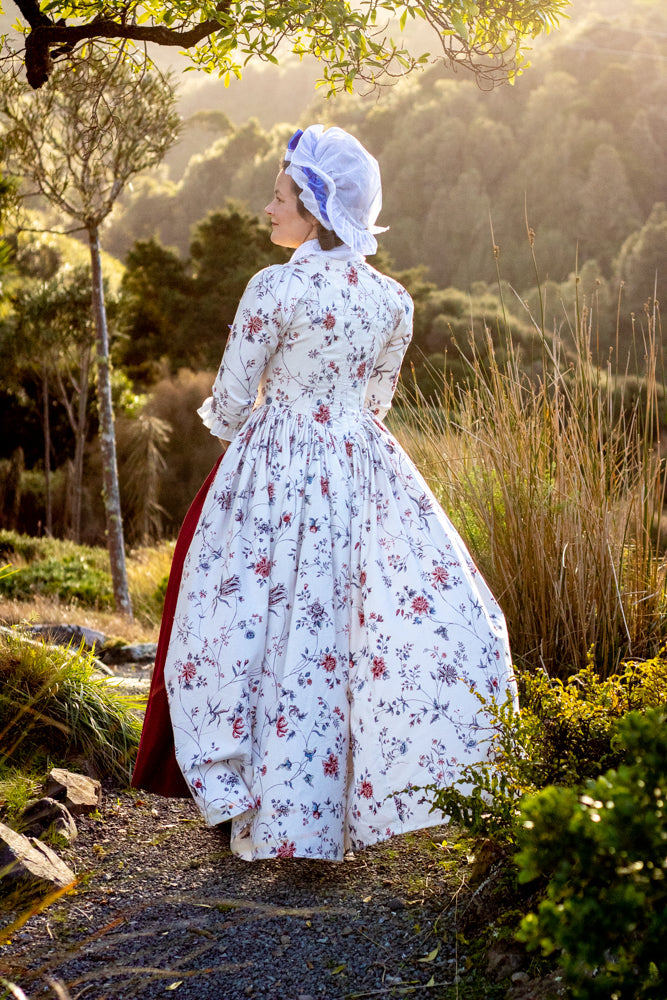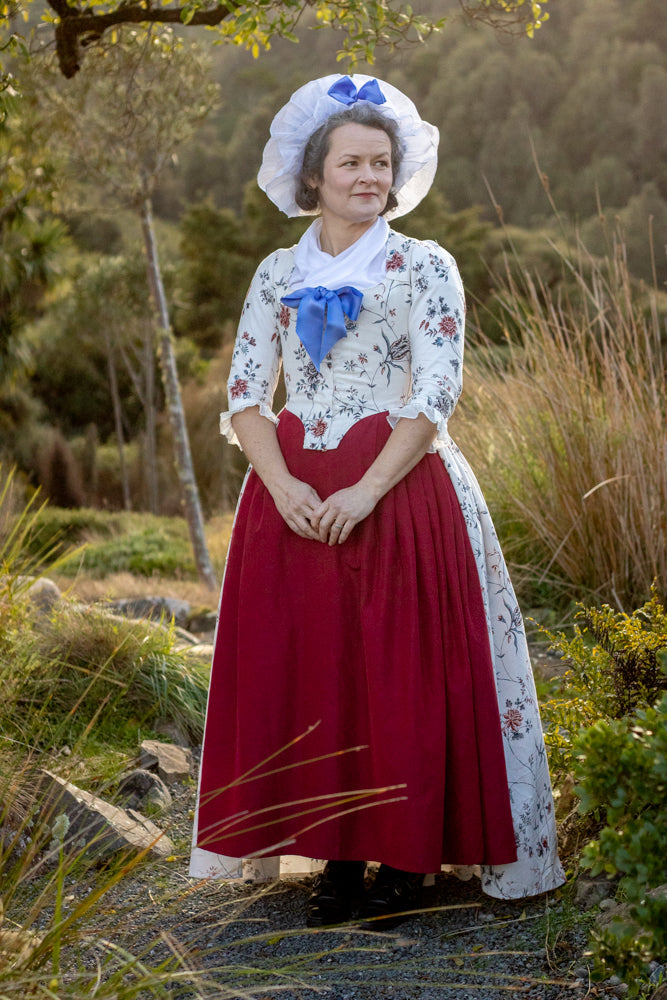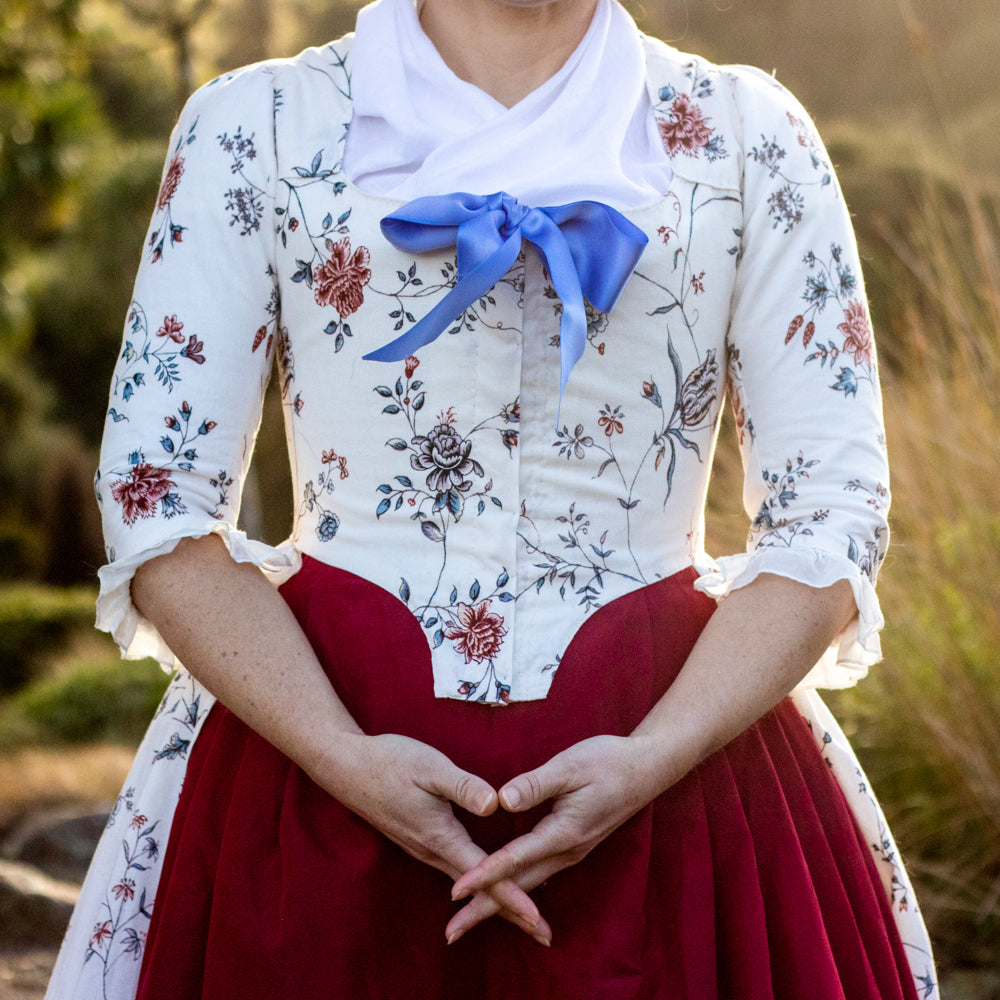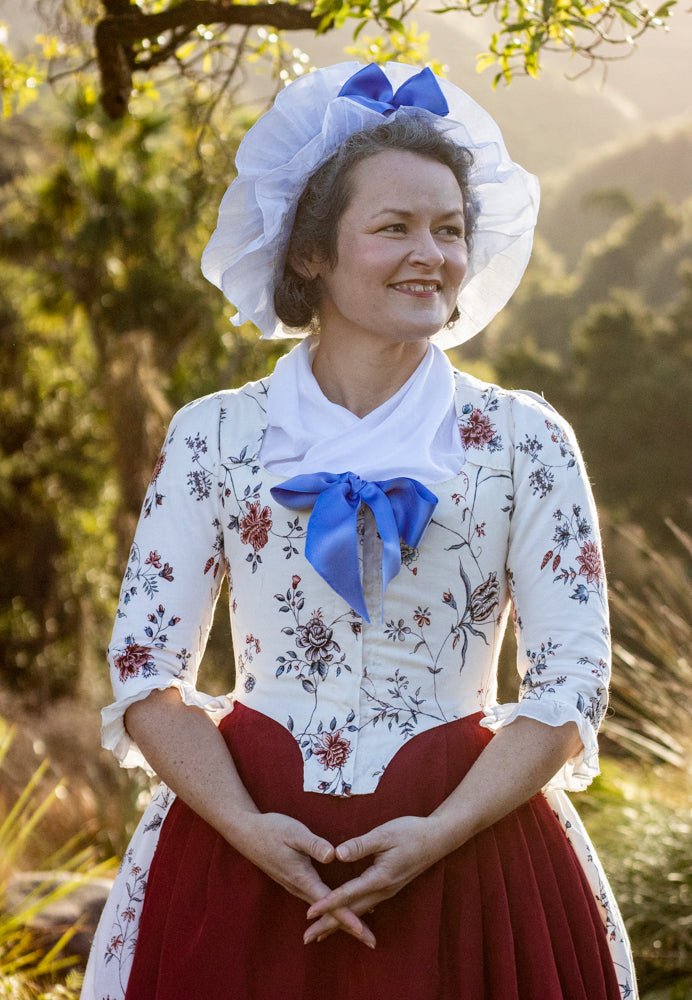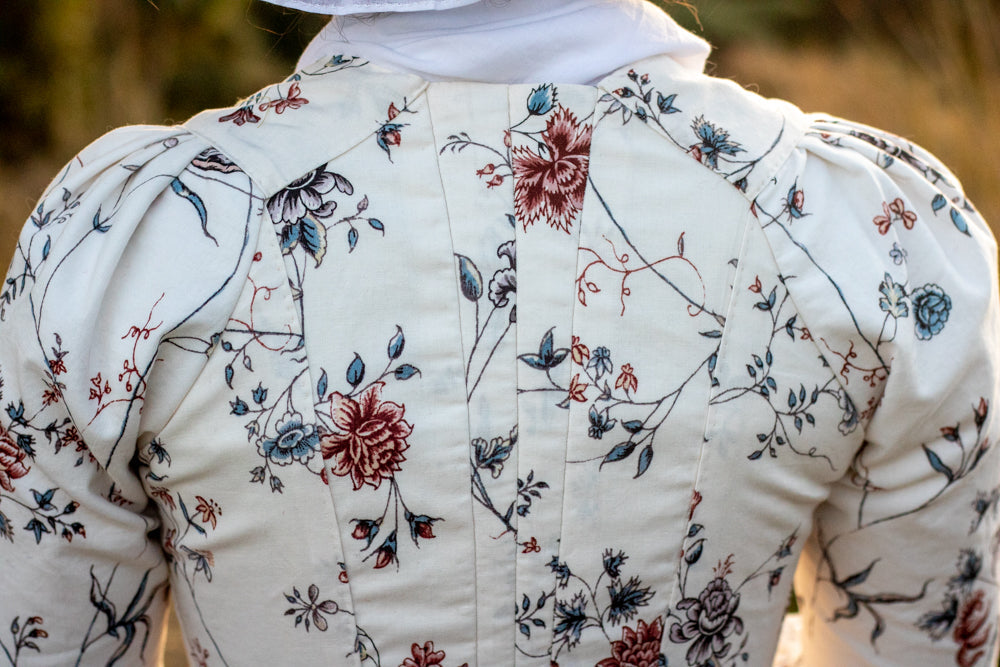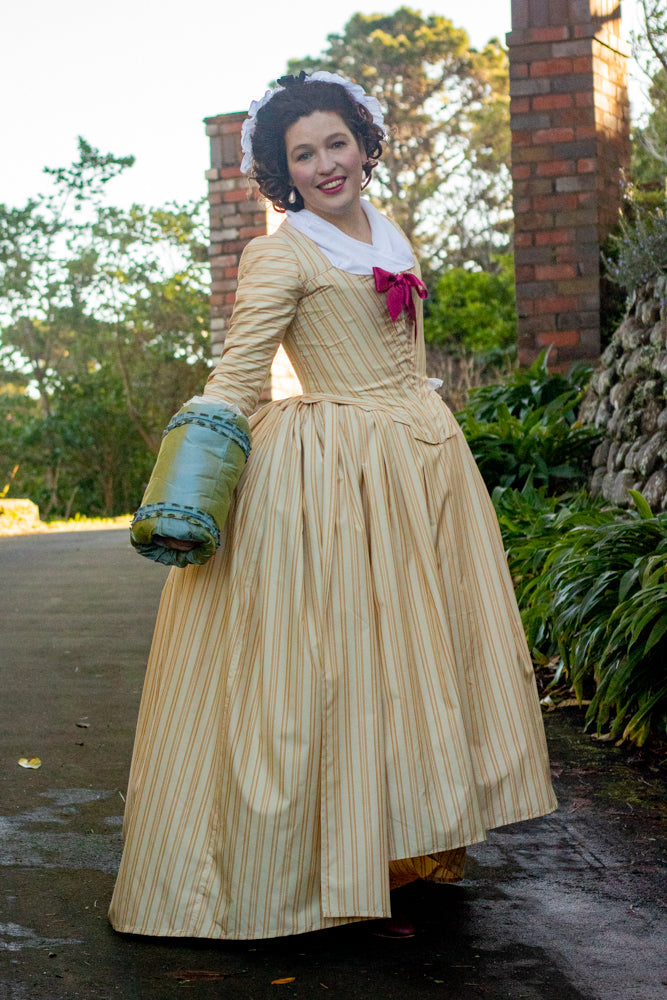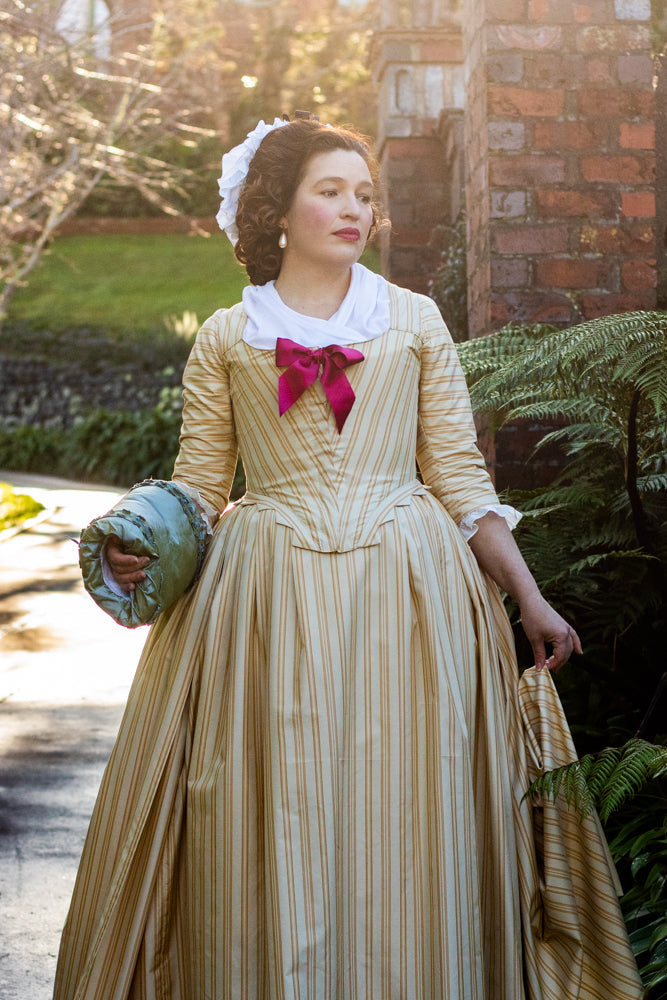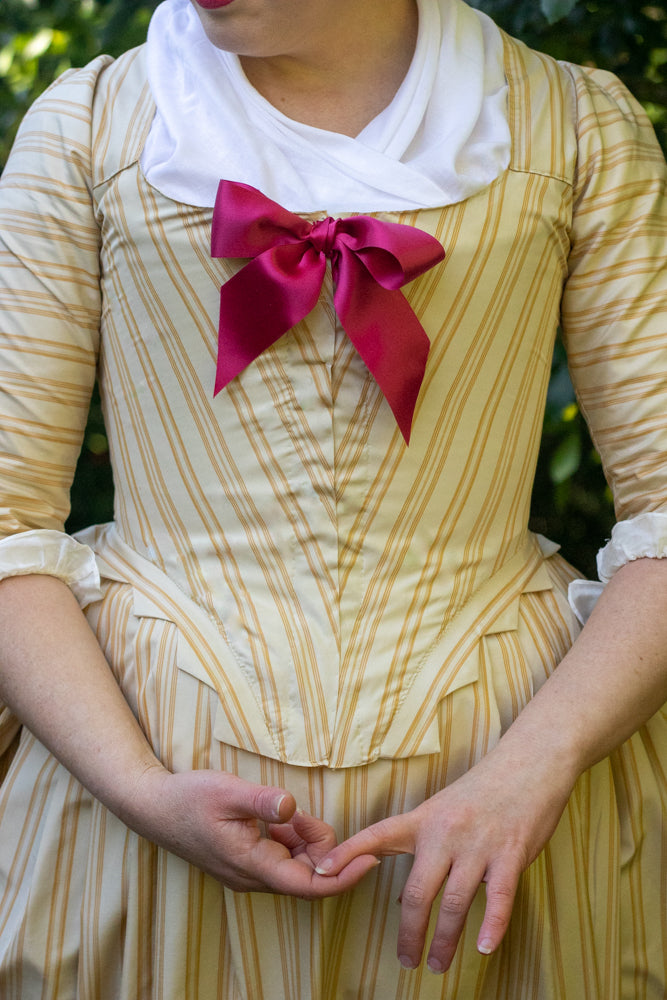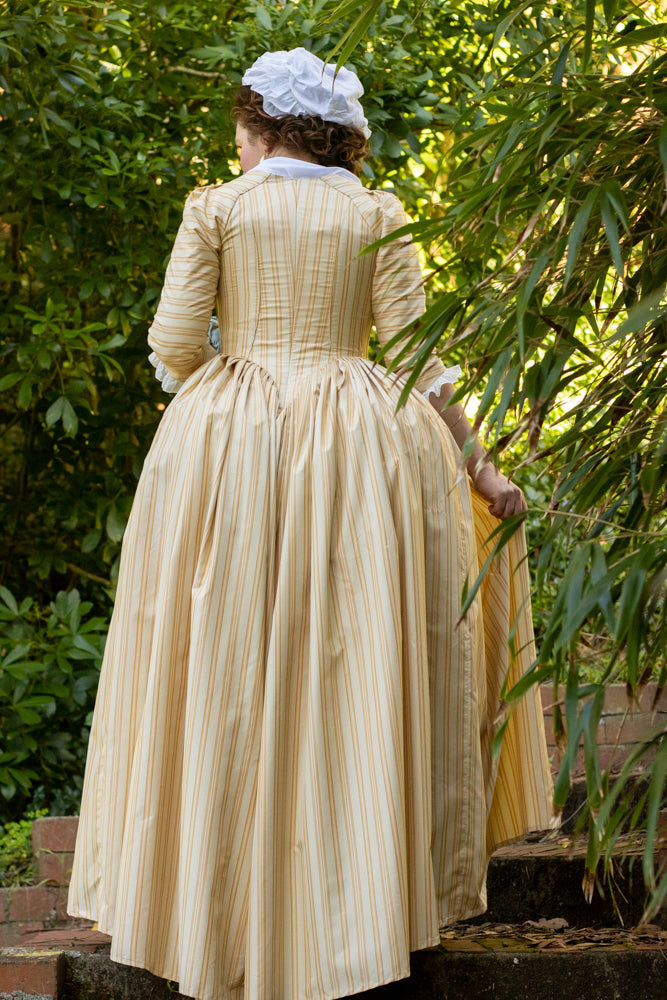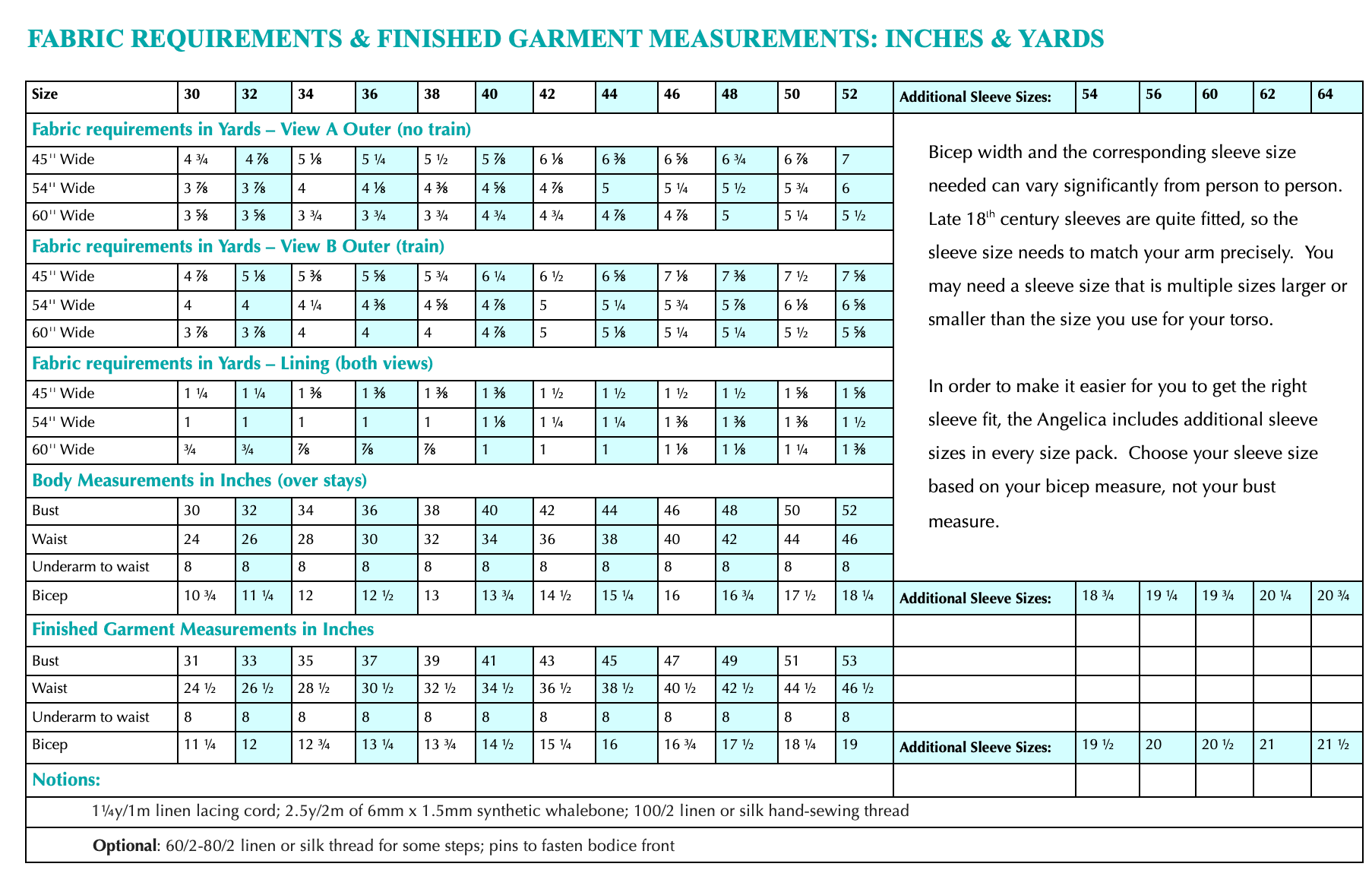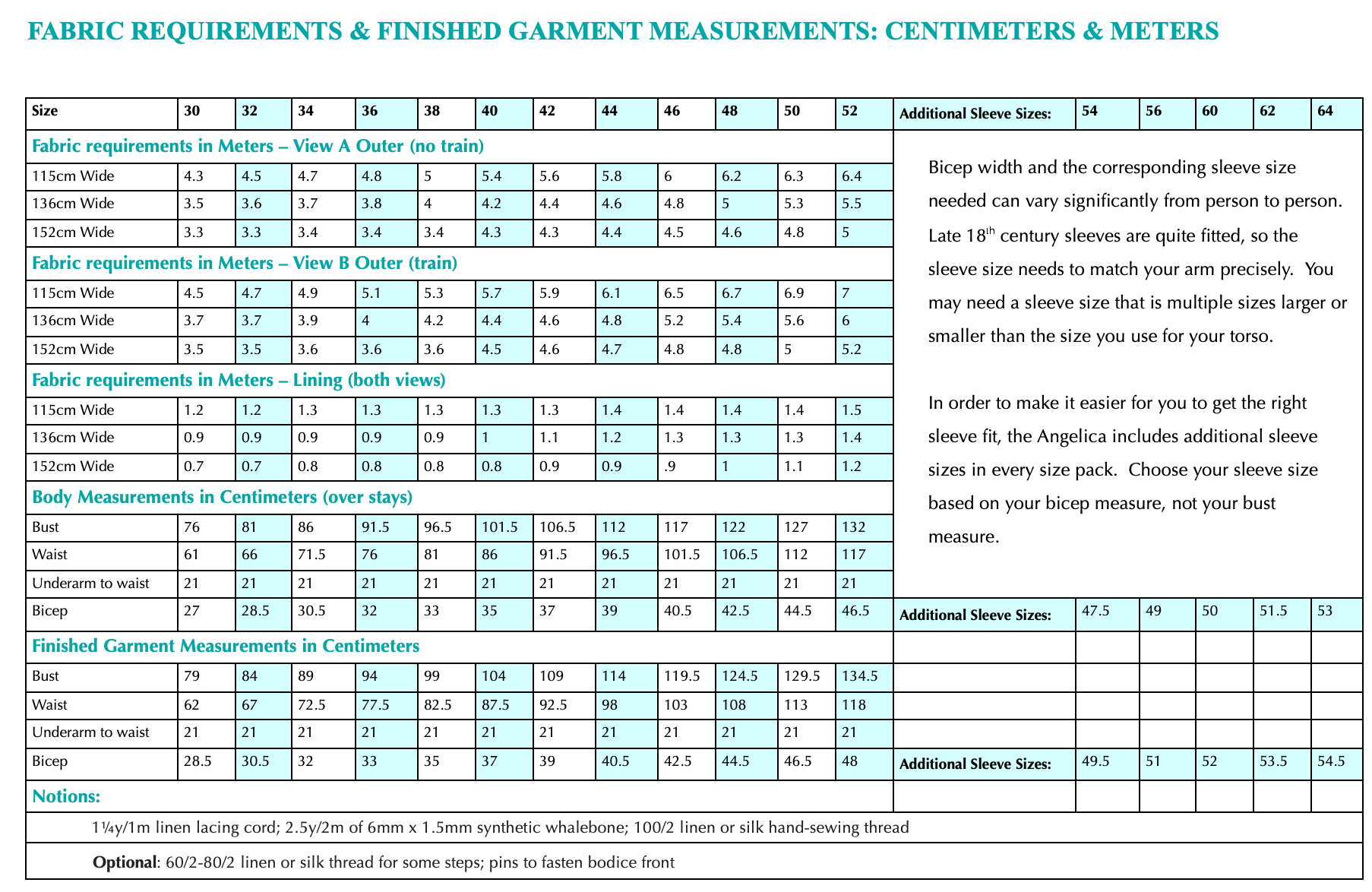Virgil's Fine Goods + Scroop Patterns
Angelica Italian Gown (1775-1790) Pattern || #2201
Angelica Italian Gown (1775-1790) Pattern || #2201
Couldn't load pickup availability

The Angelica Gown pattern is an elegant and versatile variant of the 'Italian Gown' style fashionable from the mid 1770s to the early 1790s. This type of gown has a skirt and bodice cut as separate pieces, differentiating it from the earlier Robe à l'Anglaise which featured a skirt and bodice center-back cut as one piece.
Both views of the Angelica gown feature deeply pointed backs waists, high narrow backs with sleeves set far into the back, a full pleated skirt open at the front, one-piece ¾ length sleeves, side bodice seams, removable interior boning, and a hidden front-laced closure.
View A has a plain bodice front with a short pointed front curve that ends in a truncated V, a three-panel back, and a skirt that finishes just above the floor.
View B features a longer sloped V at the front waist, optional serrated trim along the front waist edge, a two-panel back, and a slight train.
Mix and match fronts and backs and skirts for a variety of looks.
The pattern features a clever skirt pattern based on 18th century skirt construction, as well as the detailed historical instructions and helpful fitting guide Scroop + Virgil's Fine Goods patterns are known for.
The Angelica Gown is designed to be worn over a full set of 18th century undergarments, including stays, such as the Augusta Stays and a false rump, such as the Frances Rump.
Sizing Chart:

Social Media:

PATTERN DOWNLOAD:
If you are interested in a downloadable pattern please follow this link
Pattern Specifications
Pattern Specifications
This pattern is a physical paper pattern.
The Amalia Jacket Pattern contains the following:
45 page Instruction Booklet + Fitting Guide
2 large paper printed pattern sheets
Paper Envelope
Size Chart
Size Chart
Sizing
Sizing
Sizes 30-52 in 3 size packs:
Size Pack A: 30-40
Size Pack B: 36-46
Size Pack C: 42-52
Recommended Materials
Recommended Materials
Outer: light or midweight fabrics including: block-printed cotton; plain, striped, and brocaded silks; plain and striped linens; plain and checked wools. Consult extant garments for examples of patterns, prints and weaves that were used in period.
Lining: light to midweight linen (most common) or block printed cotton (less common) or light-midweight silk (least common)
Research & Inspiration
Research & Inspiration
Here are some helpful links to the research and inspirations of this product:
- Dresses of this cut featuring short curved front points, like View A, were worn from 1775 onwards. The longer, straighter front V and serrated trim of View B were fashionable from 1780 onwards. Both styles began to fall out of favor from 1790 onward, but continued to be worn by poorer and less fashionable women (often as secondhand garments) up until the end of the 18th century.
- The Aidah vs the Angelica: what's the difference
- Meet the 1780s Angelica Gown
- The inspiration behind the Angelica Gown
- Horizontal or vertical? Sleeve stripes on 1770s-90s gowns and jackets
This pattern does not include instructions on making the petticoat (skirt) that is visible at the front of the gown. There are numerous free tutorials for this on the internet. We likethe one by Burnley & Trowbridge.
About the Models
About the Models
Kezia is wearing View A in Size 34 in a reproduction cotton print from Colonial Williamsburg, with a silk petticoat. She wears her Angelica over Augusta Stays and a smaller View B Frances Rump, to show what the gown looks like over a crescent rump with a less exaggerated silhouette.
Leimomi is wearing View B in Size 40 in striped gold-yellow lightweight silk taffeta with matching petticoat. She wears her Angelica over Augusta Stays and a full split rump, to show what the gown looks like in a very high-fashion silhouette.
Usage Agreement
Usage Agreement
Share


















